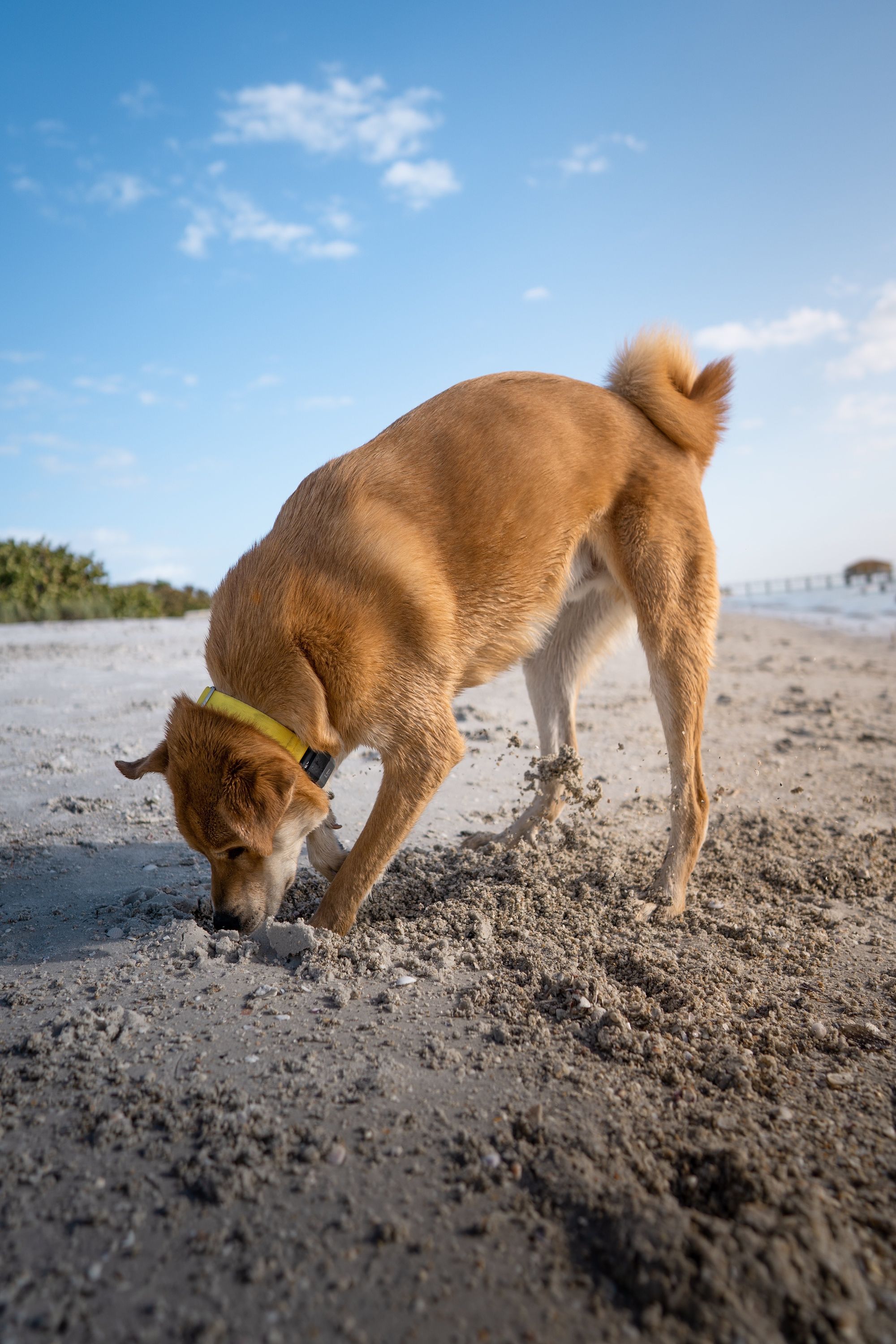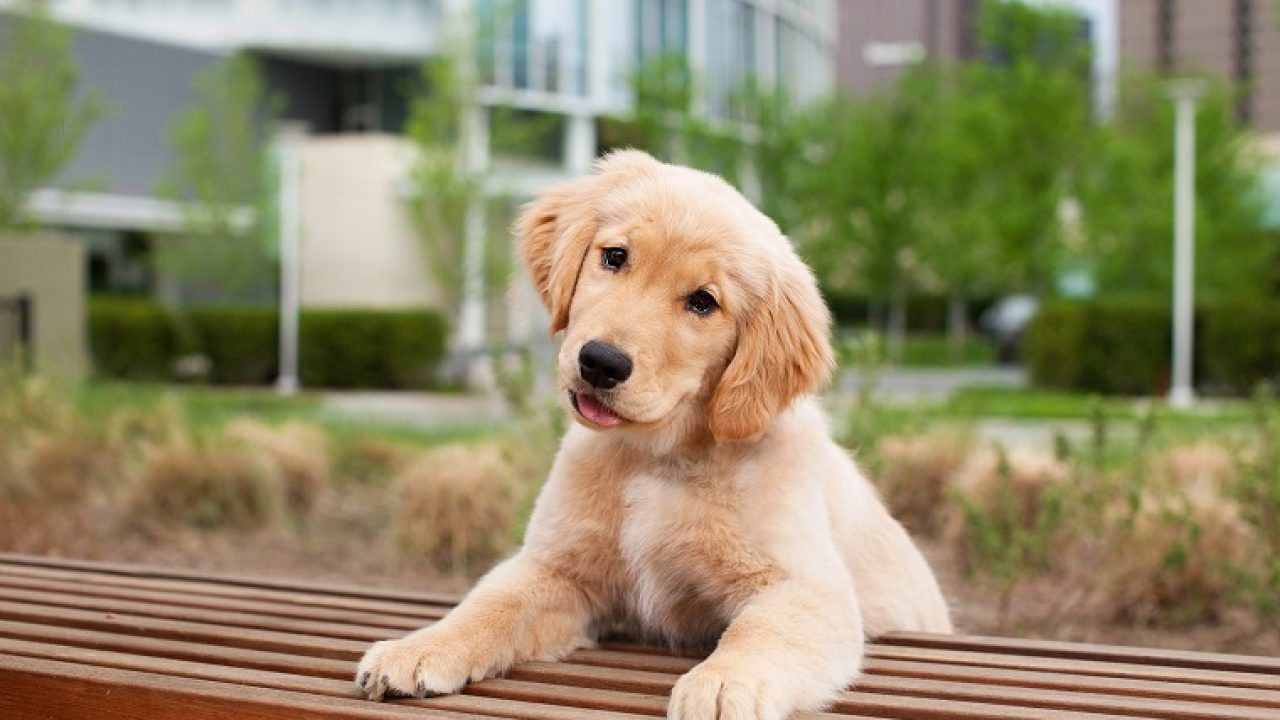Dogs are known for their loyalty, playfulness, and ability to bring joy into our lives. As dog owners, we want to make sure our furry friends are happy and healthy. But what does it mean for a dog to be happy? And how can we ensure that our dogs are living their best lives?
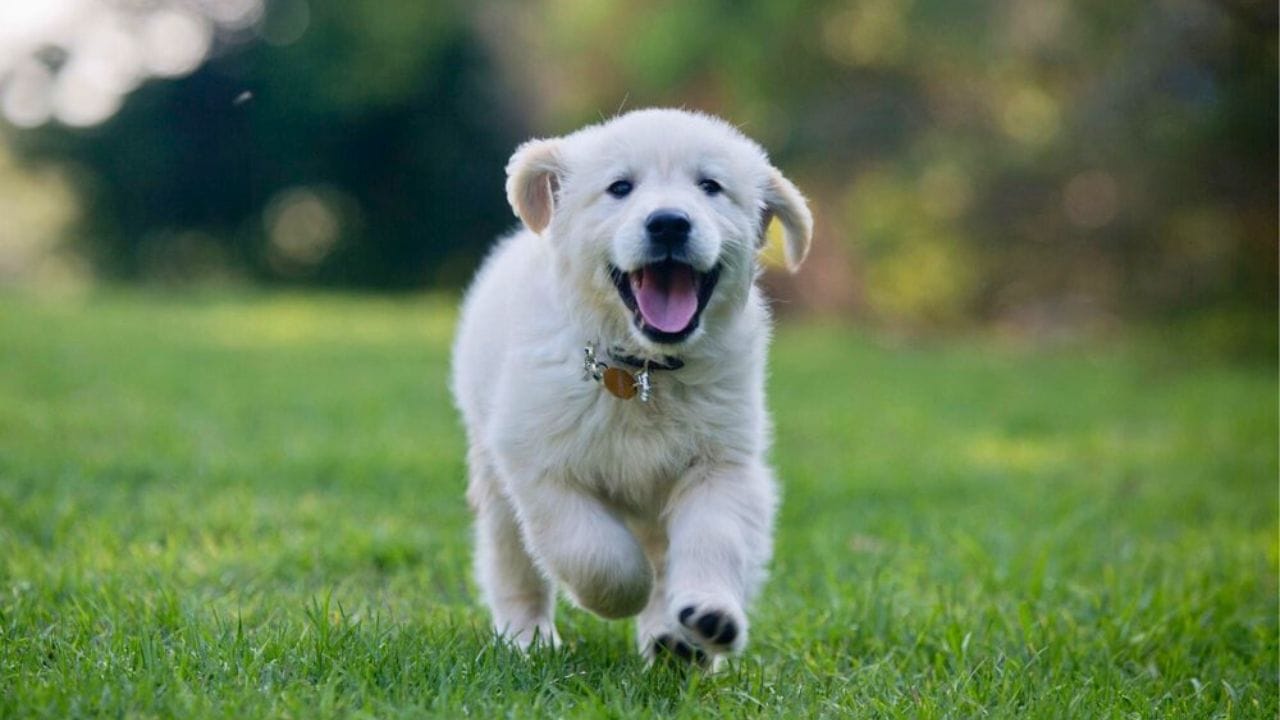
Understanding canine happiness is essential for any dog owner. It involves recognizing the signs of a happy dog and understanding the factors that contribute to their overall well-being. From providing proper nutrition to creating a stimulating environment, there are many ways to ensure your dog is happy and healthy.
Essentials of dog care, socialization and companionship, health and wellness, and activities for you and your dog are all important aspects of canine happiness. By incorporating these elements into your dog's daily routine, you can ensure that they are living their happiest life. In this article, we will explore the different ways you can make your dog happy and provide tips for creating a fulfilling life for your furry friend.
Key Takeaways
- Understanding canine happiness is essential for any dog owner.
- Providing proper nutrition, creating a stimulating environment, and incorporating socialization and companionship are all important factors in ensuring your dog's happiness.
- By prioritizing your dog's health and wellness and engaging in activities with them, you can create a fulfilling life for your furry friend.

Understanding Canine Happiness
Dogs are known for being man's best friend and can bring immense joy and happiness to our lives. Understanding how to keep our furry friends happy is important for their overall well-being. Here are some insights into what makes a happy dog.
Behavioral Signs of a Happy Dog
Dogs communicate their emotions through body language. A wagging tail, relaxed ears, and a playful demeanor are all signs of a happy dog. They may also display other behaviors such as jumping, licking, and rolling over as a sign of contentment and joy. It's important to pay attention to your dog's body language to understand their emotional state and provide them with the care they need.
The Science of Dog Emotions
Studies have shown that dogs experience emotions similar to humans, including happiness. The hormone oxytocin, also known as the love hormone, is released in both dogs and humans during positive interactions. This hormone creates a bond between the two parties, leading to feelings of happiness and contentment.
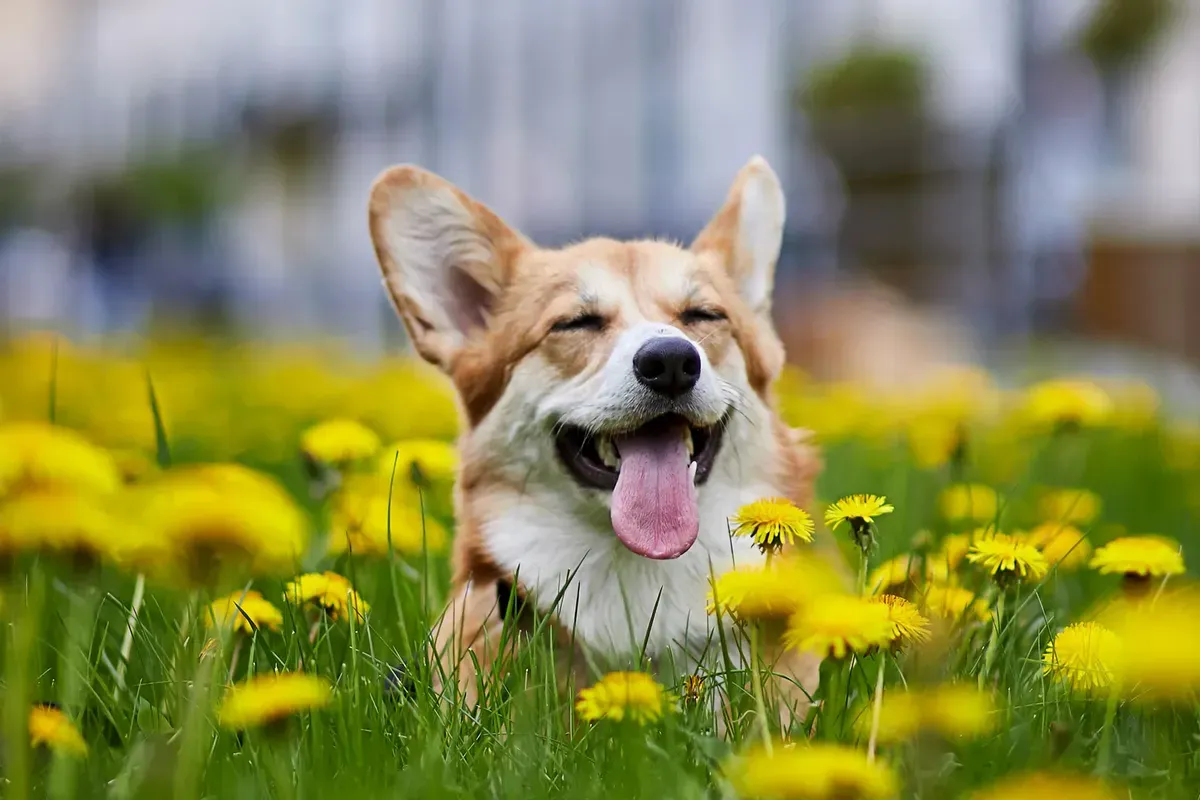
It is important to note that different dog breeds may have different personality traits and may express happiness in different ways. Additionally, the happiness of a dog can be influenced by their environment and the treatment they receive from their human companions.
In conclusion, understanding the behavioral signs and science behind a happy dog can help pet owners provide the best care for their furry friends. By paying attention to their body language and providing positive interactions, we can ensure our dogs live happy and fulfilling lives.
Essentials of Dog Care
Proper Nutrition and Feeding
Feeding your pet a balanced diet is crucial for their overall health and well-being. A well-rounded diet should include proteins, carbohydrates, fats, vitamins, and minerals. It is important to choose a high-quality dog food that meets your pet's nutritional needs.
In addition to feeding your pet a balanced diet, it is important to provide them with fresh, clean water at all times. Water helps regulate body temperature, aids in digestion, and helps flush out toxins from the body.
Importance of Regular Exercise
Regular exercise is essential for maintaining your dog's physical and mental health. Exercise helps to keep your pet's muscles strong, maintains a healthy weight, and improves cardiovascular health. It also helps to prevent behavioral problems such as excessive barking, chewing, and digging.
Taking your pet for a walk every day is a great way to provide them with exercise. You can also play games with your pet such as fetch or tug-of-war. It is important to choose activities that are appropriate for your pet's age, breed, and physical abilities.
Maintaining Cleanliness and Hygiene
Maintaining cleanliness and hygiene is important for your pet's health and well-being. Regular grooming can help prevent skin infections, matting, and other health problems. It is important to bathe your pet regularly using a mild shampoo and to brush their coat to remove loose hair and debris.
In addition to grooming, it is important to keep your pet's living environment clean. This includes regularly cleaning their bedding, toys, and food and water dishes. It is also important to pick up after your pet when they go outside to prevent the spread of disease.
Overall, taking proper care of your pet involves providing them with a balanced diet, regular exercise, and maintaining cleanliness and hygiene. By following these guidelines, you can help ensure that your pet stays healthy and happy.
Creating a Stimulating Environment
Creating a stimulating environment is essential for keeping a happy dog. A stimulating environment can help prevent boredom and keep your furry friend active and engaged. Here are some ideas for creating a stimulating environment for your dog:
Toys and Playtime
Toys and playtime are essential for keeping your dog entertained and happy. Dogs love to play, and providing them with a variety of toys can help keep them occupied. It's important to choose toys that are appropriate for your dog's size and breed. Some dogs prefer toys that they can chew on, while others prefer toys that they can fetch or chase.
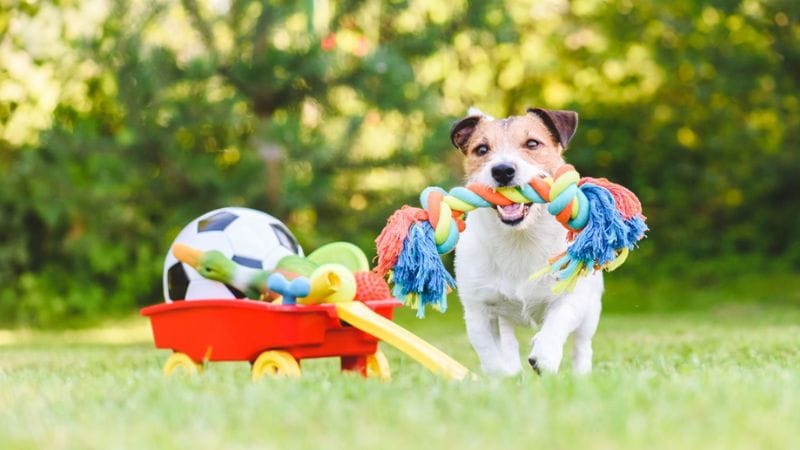
Interactive toys, such as puzzle toys, can also provide mental stimulation for your dog. These toys require your dog to use problem-solving skills to get to the treat or toy inside. This type of toy can help keep your dog mentally sharp and prevent boredom.
Training and Mental Stimulation
Training and mental stimulation are also important for keeping your dog happy. Dogs love to learn new things, and training can provide them with the mental stimulation they need. Training can also help establish structure and rules for your dog, which can help them feel more comfortable and secure.
Mental stimulation can also come in the form of activities such as sniffing games or hide-and-seek. These activities can provide your dog with a sense of fun and play, while also engaging their natural instincts.
Overall, creating a stimulating environment for your dog is essential for keeping them happy and healthy. By providing toys, playtime, training, and mental stimulation, you can help keep your furry friend engaged and entertained.
Socialization and Companionship
The Role of Social Interactions
Socialization is an important aspect of a dog's life. Dogs are social animals and they need social interaction to be happy and healthy. Socialization helps dogs to learn how to interact with other dogs, people, and their environment. It also helps to build their confidence and reduce anxiety.
Dogs need friends too. It's important for dogs to have other dogs to hang out with, play with, and learn from. When dogs play together, they learn how to communicate and interact with each other. This helps them to develop better social skills and become more confident.
Dog owners can help their dogs to socialize by taking them to dog parks, doggy daycare, or other places where they can interact with other dogs. It's important to supervise dogs during these interactions to ensure that they are safe and not engaging in any aggressive behavior.
Building a Trusting Relationship
Companionship is another important aspect of a dog's life. Dogs are loyal and affectionate animals and they need companionship to be happy. Building a trusting relationship with your dog is important to make your dog happy.
Dog owners can build a trusting relationship with their dogs by spending time with them, playing with them, and giving them attention. It's important to establish a routine with your dog so that they know what to expect and feel secure.
Dogs also need to feel safe and secure in their environment. Providing a comfortable and safe environment for your dog can help to reduce anxiety and build trust. This includes providing a comfortable bed, toys to play with, and a safe place to retreat to when they need some alone time.
In conclusion, socialization and companionship are important aspects of a dog's life. Dogs need social interaction to be happy and healthy, and they need companionship to feel secure and loved. Dog owners can help their dogs to socialize and build a trusting relationship by spending time with them, providing a safe environment, and being attentive to their needs.
Health and Wellness
Regular Veterinary Care
To keep a happy dog healthy and comfortable, regular veterinary care is essential. This includes annual check-ups, vaccinations, and preventative care for fleas, ticks, and heartworms. It is important to establish a good relationship with a veterinarian who understands your dog's unique needs and can provide personalized care.
During each visit, the veterinarian will perform a physical exam and may recommend additional tests or treatments as needed. It is important to keep track of your dog's medical history and bring any concerns to the attention of your veterinarian.
Preventing and Addressing Common Health Issues
Preventing and addressing common health issues is an important part of maintaining a happy dog. Some common health issues include dental problems, obesity, and joint pain. To prevent these issues, it is important to provide a healthy diet, regular exercise, and dental care.
If your dog does experience a health issue, it is important to address it promptly. This may involve medication, surgery, or other treatments. It is important to work closely with your veterinarian to develop a treatment plan that is tailored to your dog's needs.
Overall, taking care of your dog's health and wellness is essential for their comfort and happiness. By providing regular veterinary care and addressing any health issues promptly, you can help your dog live a long and healthy life.

Activities for You and Your Dog
Taking your dog out for a walk or an adventure is a great way to bond with them. It's also beneficial for their physical and mental health. Here are some activities you can do with your furry friend.
Outdoor Adventures and Walks
Going for a walk is the most common activity you can do with your dog. It's a great way to get some exercise and fresh air. You can take your dog to a nearby park or explore a hiking trail. If you're feeling adventurous, you can even take your dog on a camping trip.
When going for a walk, make sure to bring a leash and some waste bags. This will ensure that your dog stays safe and you can clean up after them. You can also bring some treats or toys to keep them entertained.
Dog-Friendly Events and Gatherings
If you want to show off your dog or just meet other dog owners, you can attend dog-friendly events and gatherings. These can include dog shows, parties, and meetups. You can check your local community center or pet store for upcoming events.
For example, in Cleveland, there are several dog-friendly events throughout the year. The Detroit Ave Dog Park hosts a monthly Yappy Hour where you can bring your dog to socialize with other furry friends. There are also annual dog shows such as the Cleveland Kennel Club Dog Show.
Overall, there are many activities you can do with your dog to keep them happy and healthy. Whether it's going for a walk or attending a dog show, spending time with your furry friend is always a great idea.
Frequently Asked Questions
- How can you tell if a dog is happy?
- Dogs communicate their emotions through body language and behavior. A happy dog will wag its tail, have relaxed ears, and a relaxed body posture. They may also playfully jump around and lick their owners.
- What are the best dog breeds for a joyful and energetic household?
- Breeds such as Golden Retrievers, Labrador Retrievers, and Australian Shepherds are known for their joyful and energetic personalities. However, it's important to remember that each dog has its own unique personality, regardless of breed.
- What are effective ways to keep your dog happy and healthy?
- Providing regular exercise, a balanced diet, and plenty of socialization are all important factors in keeping a dog happy and healthy. Regular veterinary check-ups and training sessions can also help maintain a dog's well-being.
- Which types of food are recommended for maintaining a happy dog?
- A high-quality dog food that contains a balanced blend of protein, carbohydrates, and fats is recommended for maintaining a happy and healthy dog. It's important to consult with a veterinarian to determine the specific dietary needs of your dog.
- How does playing games affect a dog's happiness?
- Playing games with your dog can provide mental and physical stimulation, which can contribute to a dog's overall happiness. Games such as fetch, hide-and-seek, and tug-of-war can also strengthen the bond between a dog and its owner.
- What are some signs of happiness to look for in your dog's behavior?
- A happy dog will display a wagging tail, relaxed ears, and a relaxed body posture. They may also playfully jump around and lick their owners. Additionally, a happy dog will have a healthy appetite, enjoy regular exercise, and seek out social interaction with both humans and other dogs.
